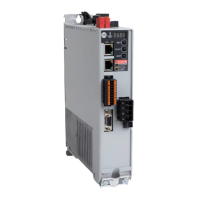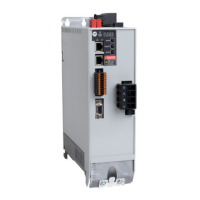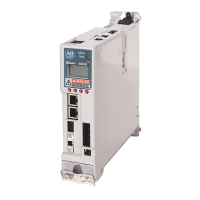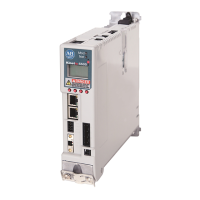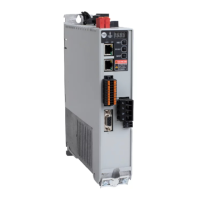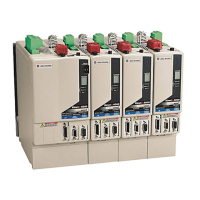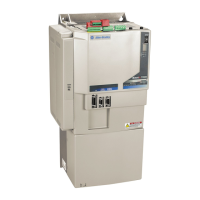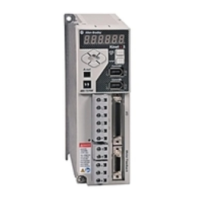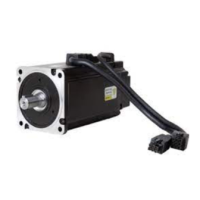Rockwell Automation Publication 2198-UM004D-EN-P - December 2022 269
Chapter 10 Modes of Operation
Dual and Multi-modes Eight dual/multiple modes are provided for operation in addition to the single
modes. The Dual and Multi-mode functions are chosen by using the Operation
Mode setting in KNX5100C setting (Control Mode, ID117, P1.001), and then
using Digital Inputs that contain all the mode combinations.
Speed/Position Dual Mode
The timing chart shows the behavior of the dual mode operation when
switching from Speed mode into Position mode.
• CTRG (Digital Input = CmdTriggered)
• S-P (Digital Input = Position/Speed modes selection,
0 = Position, 1 = Speed as shown)
• POS0…POS6 indicates a valid binary-weighted PR is selected
• SPD0/1 indicate that the preset speed registers are valid
Here is the typical configuration for this operation:
1. Choose the PR/S Operation Mode.
2. Set your Digital I/O (in this example, we are using PR1 and SPD0).
3. Set Position/Speed Mode Selection - this switches between the two
modes dynamically.
4. Command Triggered DI (CTRG) is selected.
In Speed Mode, when the transition to Position mode occurs, we require the
CTRG (CmdTriggered) input to transition Off to On to begin the selected PR.
Mode Short Name Setting Code Description
Dual
PT-S 06 PT and S can be switched by using the DI signal, S_P.
PT-T 07 PT and T can be switched by using the DI signal, T_P.
PR-S 08 PR and S can be switched by using the DI signal, S_P.
PR-T 09 PR and T can be switched by using the DI signal, T_P.
S-T 0A S and T can be switched by using the DI signal, S_T.
PT-PR 0D PT and PR can be switched by using the DI signal, PT_PR.
Multi-mode
(1)
(1) Multiple (multi-) modes are a combination of a dual mode and a single mode.
PT-PR-S 0E
PT, PR, and S can be switched by using the DI signal, S_P and
PT_PR.
PT-PR-T 0F
PT, PR, and T can be switched by using the DI signal, T_P and
PT_PR.
IMPORTANT When dual/multi modes are used, the mode changing is immediate,
which can result in unintended motion.
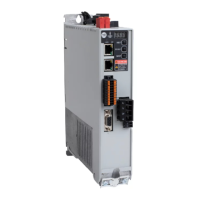
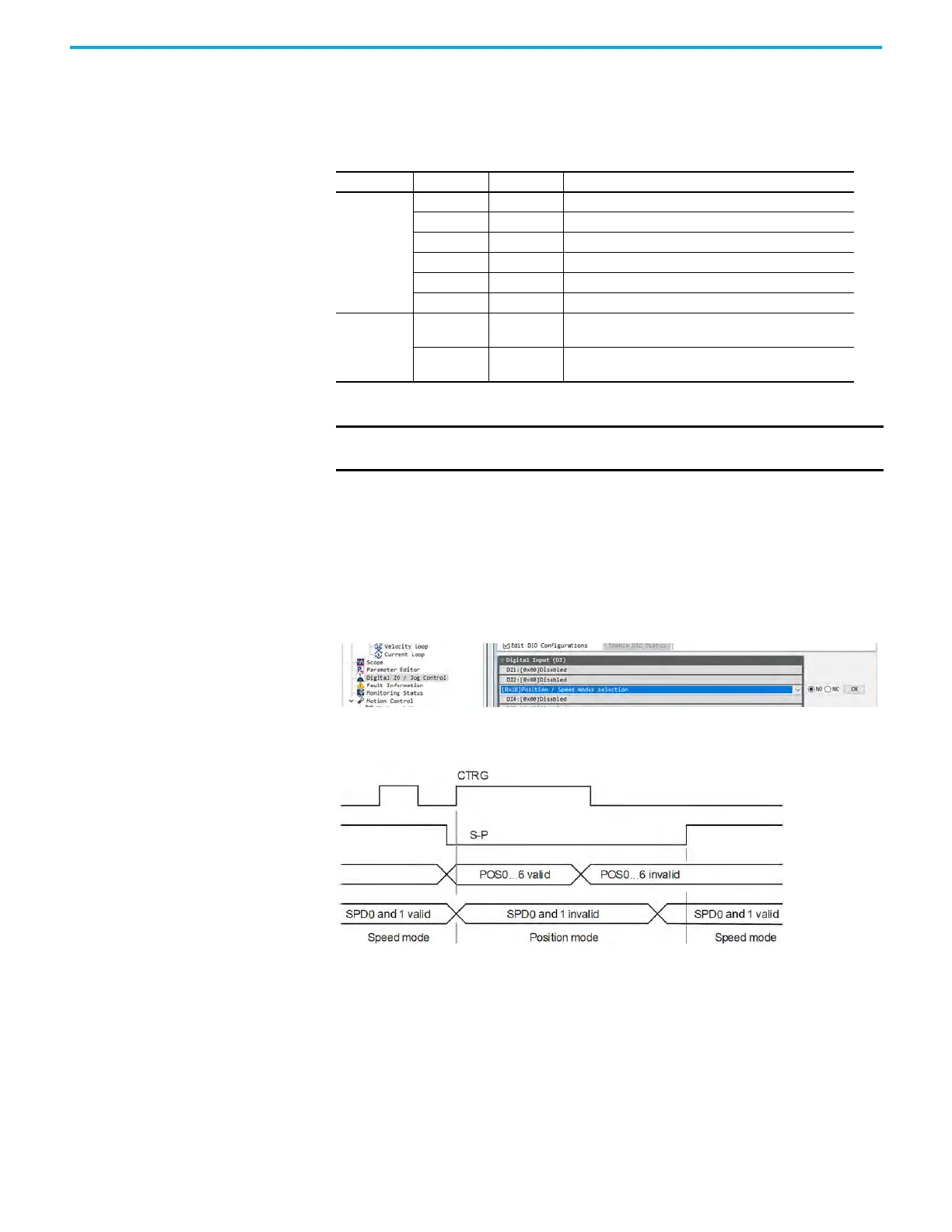